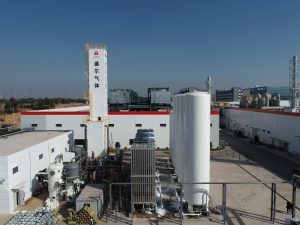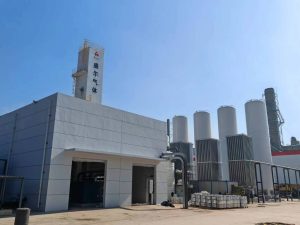Introduction: The Core of Cryogenic Separation
Cryogenic air separation units (ASUs) are critical systems for producing high-purity oxygen and nitrogen. At the center of this process lies the condenser-evaporator. This dual-function heat exchanger links the high-pressure (HP) and low-pressure (LP) columns, enabling phase exchange between nitrogen and oxygen. It maintains system stability and ensures efficient heat recovery without external refrigeration.
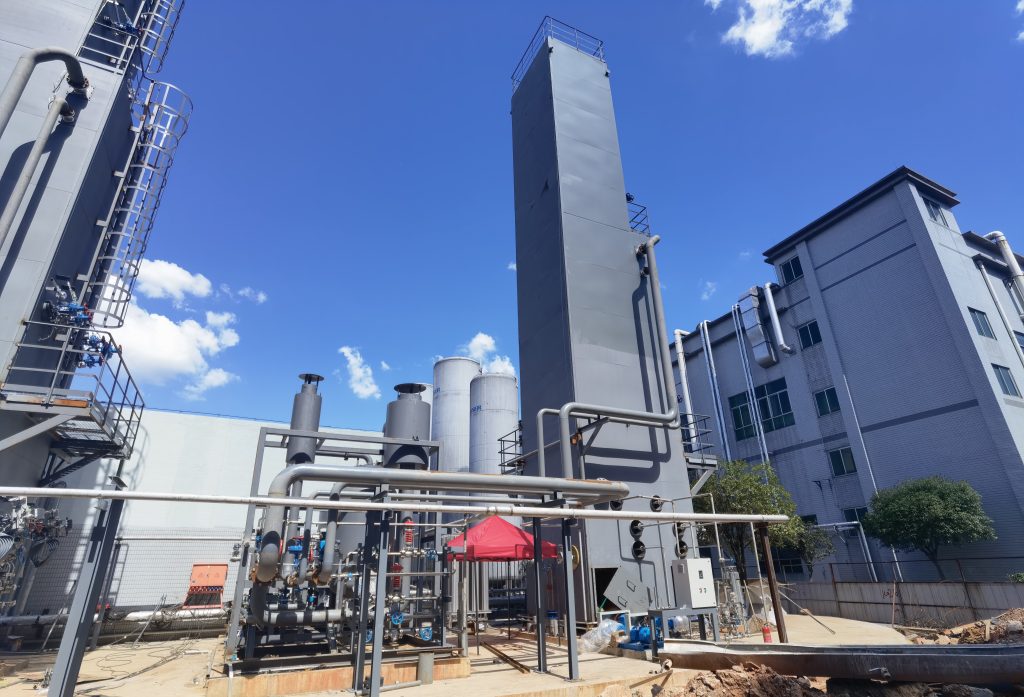
Function and Working Principle
The condenser-evaporator transfers heat between condensing nitrogen and boiling oxygen. Gaseous nitrogen from the HP column top condenses on one side. Simultaneously, liquid oxygen from the LP column bottom evaporates on the other side. The latent heat released by condensing nitrogen provides the energy needed to boil oxygen. This thermodynamic balance allows continuous separation with minimal energy loss.
Pressure and Temperature Balance
To maintain stable heat exchange, the HP column operates at 5–8 bar, and the LP column at 1–2 bar. The pressure difference creates a small temperature gap — usually 1–3 K. Nitrogen condenses at slightly higher temperatures than oxygen boils. This small ΔT ensures maximum energy recovery and prevents freezing or incomplete condensation.
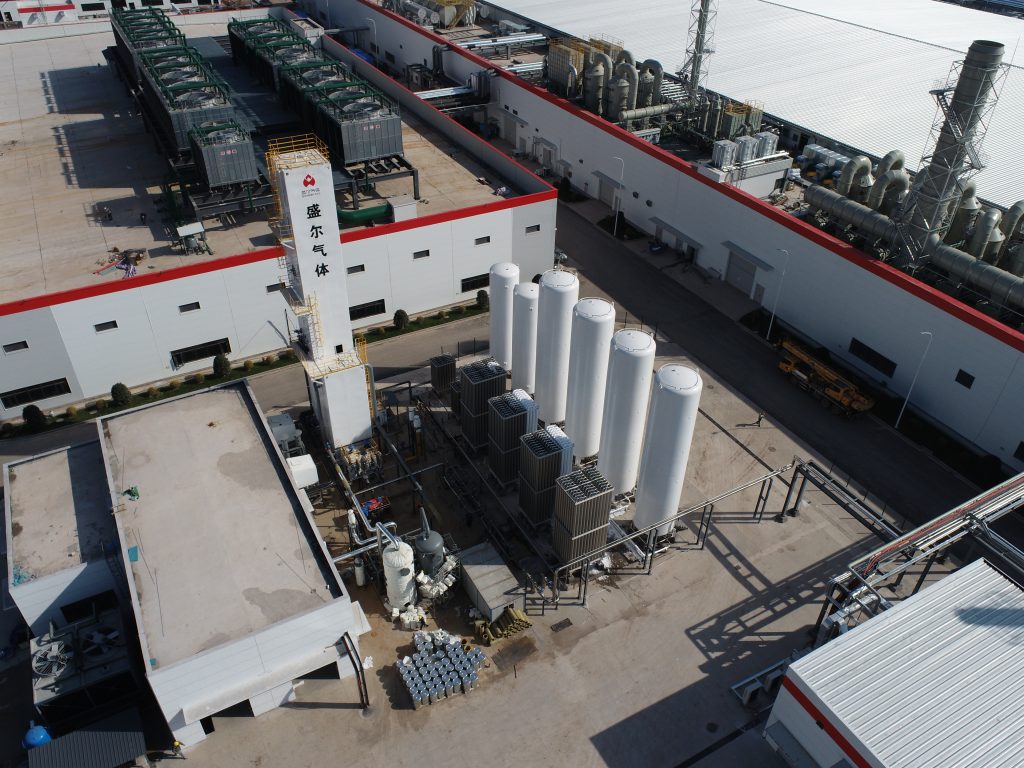
Design Types of Condenser-Evaporators
Plate-Fin Design
Modern ASUs use brazed aluminum plate-fin exchangers for compactness and efficiency. These exchangers have alternating layers for nitrogen and oxygen flow, allowing countercurrent heat transfer. Their large surface area ensures a high heat-transfer rate and a temperature approach as low as 1 K.
Coil-in-Shell Design
The coil-in-shell condenser-evaporator uses a helical tube bundle inside a shell. One side carries nitrogen vapor; the other side holds boiling oxygen. Though easier to maintain and inspect, it is less compact and slightly less efficient than plate-fin designs.
Other Configurations
Some small-capacity or older plants use multiple small plate-fin modules or shell-and-tube designs. These alternatives are more robust but occupy more space and need higher temperature differences for effective operation.
Thermodynamic Operation
When nitrogen condenses, it releases around 200–215 kJ/kg of latent heat. Oxygen requires nearly the same amount to boil. The system achieves energy neutrality: the heat released by nitrogen equals the heat absorbed by oxygen. A well-balanced condenser-evaporator keeps this exchange reversible and minimizes exergy loss.
Energy Integration
Tight temperature control reduces the compressor load and power demand. Modern systems can reduce total ASU energy use by up to 30–40% through efficient condenser-evaporator design. Every degree of additional temperature difference increases power consumption, so precision in thermal design is essential.
Integration with HP and LP Columns
The condenser-evaporator forms a thermal bridge between the HP and LP columns. Condensed nitrogen serves as reflux for both columns, while evaporated oxygen rises to the LP column. This eliminates external heating and cooling systems. The two columns thus work as one integrated cycle: nitrogen provides the cold, and oxygen provides the vapor flow.
Flow and Control
Piping between the columns must minimize pressure drop and ensure even flow. Level controllers and thermocouples maintain equilibrium. A change in HP column pressure immediately affects LP boiling rates and gas purity. Automated PLC or DCS systems adjust flow, valve position, and liquid levels in real time.
Impact on Energy Efficiency and Product Purity
A properly designed condenser-evaporator directly affects plant performance. Tight heat integration ensures low power use and high product purity. If nitrogen fails to fully condense, reflux decreases, leading to oxygen contamination in the nitrogen stream. Conversely, weak oxygen boiling can lower oxygen purity. Modern plants achieve over 99.5% O₂ and 99.9% N₂ purity.
Performance Optimization
Key efficiency factors include:
- Small temperature approach (1–2 K)
- Minimal pressure drop across exchangers
- Optimized mass flow ratios
- Consistent liquid levels and flow stability
Maintenance and Reliability
Operation and Cleaning
Brazed aluminum plate-fin exchangers are sealed, so air purification must remove moisture and CO₂ below 1 ppm before cooling. Start-up and shutdown must be gradual to prevent thermal stress. Coil-in-shell designs, though less efficient, allow inspection and mechanical cleaning.
Safety and Monitoring
Each unit includes safety valves, oxygen analyzers, and pressure sensors to detect leaks or blockages. Level controllers prevent flooding or dryout. Long-term reliability depends on insulation quality and clean feed gas. With proper operation, plate-fin exchangers can last 30–40 years.
Future Development Trends
Cryogenic technology continues to evolve toward higher automation, modular construction, and green energy integration. Future condenser-evaporators will incorporate digital monitoring, predictive maintenance, and smart control algorithms to further reduce energy use and increase uptime.
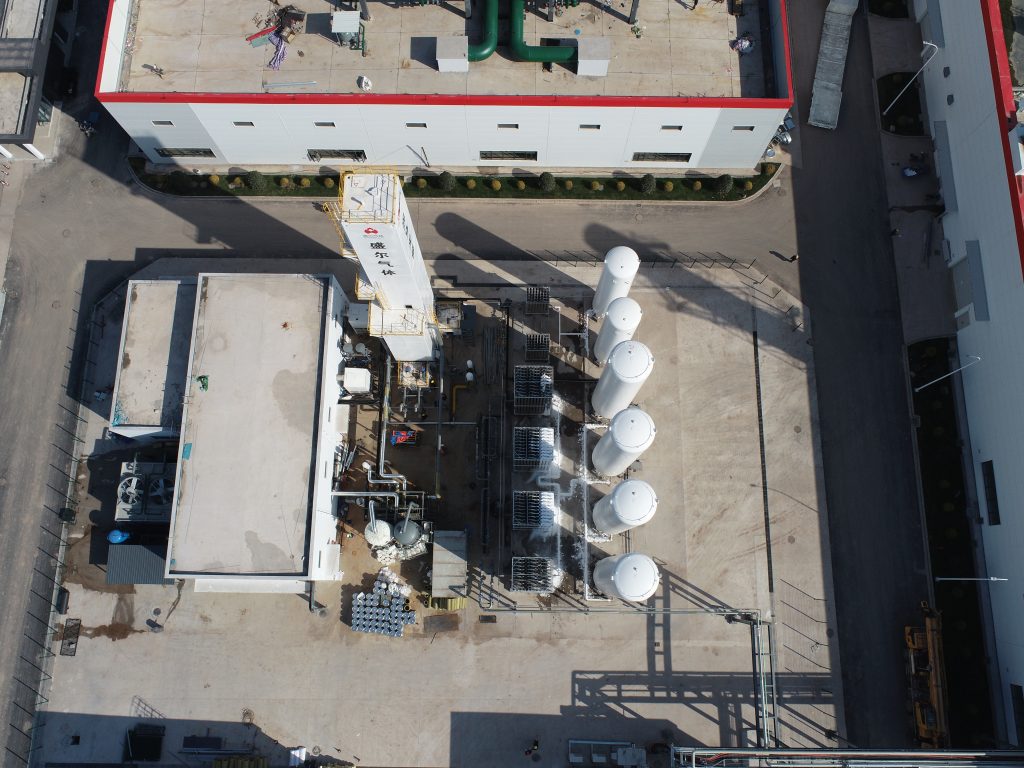
Conclusion
The condenser-evaporator is the thermal heart of a cryogenic air separation unit. Its precise design determines energy efficiency, product purity, and long-term reliability. By applying advanced heat exchange technology, companies like Sheng Er Gas (HK) deliver ASUs that meet global standards for performance, safety, and sustainability.

